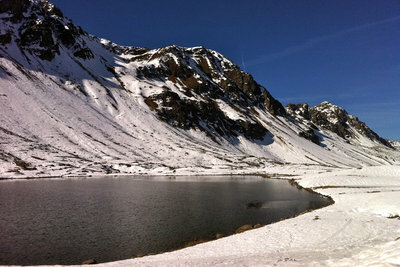Water cycle on earth
Would you like to better understand the ecosystem and the importance of the water cycle? Then you are exactly right here. You will receive valuable information for a better understanding.

What factors play a role in the ecosystem?
The earth's ecosystem is determined by the following factors, among others:
- Rock and soil: important mineral raw materials are hoarded here. Together with the dead organic matter, they form the soil, which is how many foods are produced. In this way agriculture can revive and use this food, such as grain or fruit.
- Source of life - water: three quarters of the earth's surface is covered with water. The water forms a so-called water cycle that connects the water from the rivers and lakes, the sea, glaciers, the ground, the ice sheets and in the atmosphere. This is how water enables life.
- The air we live on (atmosphere): Essential components of the metabolism of life are atmospheric gases such as oxygen and carbon dioxide. The task of the atmosphere is to connect the subsystems of the ecosystem with one another. Without air there would be no life.
- The Earth's Climate: The climate is mainly formed by the average rainfall and temperature. The two points mentioned are also the determinants of the place where living beings develop or spread.
- The organisms: The habitats of the organisms are created and also shaped by the four factors just described. Together with the water, the air, the rock, the soil and the climate, among other things, the organisms create the ecosystems that together form the global ecosystem of the earth.
Creation of a water source - the earth's water cycle simply explained
When rainwater hits an impermeable layer on its way into the earth's interior, ...
The function of the water cycle for ecosystems
The points explained above are interrelated. Because only together can they form the ecosystem.
- The interactions arise from the material cycles and energy flows.
- These connect the subsystems with one another.
- Interrelationship means that all the factors mentioned are equally important for the global ecosystem to function at all.
- Rock is removed every day by the rain and wind. The rocks become part of the soil.
- In this way, many living things, such as plants, are created.
- The water cycle is needed so that, among other things, the plants can develop and further life can form.
- The ozone layer is also a valuable layer in the atmosphere. This is necessary so that most of the UV rays are filtered out.
- Because only then is life even possible.
- The cycle of the ecosystem closes itself again and again.
- The warmth of the sun warms the earth's surface, which increases the air pressure.
- The air pressure creates winds that cause clouds (water system).
- After all, the climate is created through many complex interactions.
- From the outside, interactions also affect the ecosystem, especially the sun.
- The sun is the greatest source of energy
- Examples of external influences are a slight wobbling of the earth's axis, fluctuations in the earth's orbit around the sun, and the sun's cycles.
- The external interactions can significantly influence the conditions for life on earth.
Conclusion: These are just a few of the diverse relationships. But it becomes clear how complex the relationships between the Earth subsystem actually are. However, it is only through these relationships that the subsystems are stable.
How helpful do you find this article?


